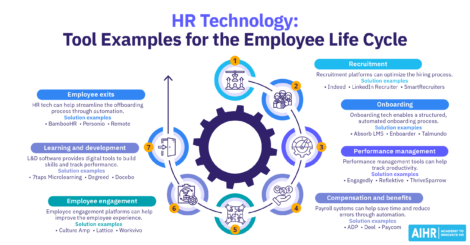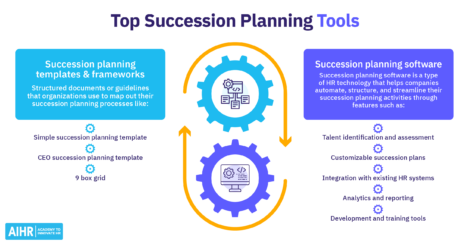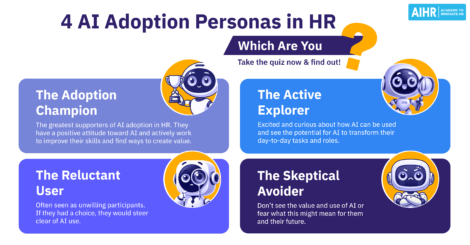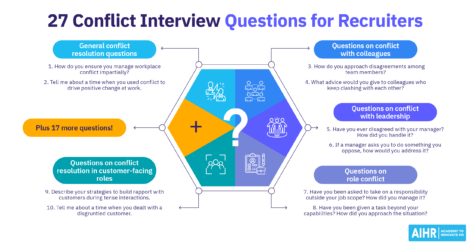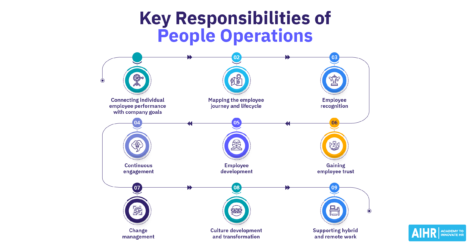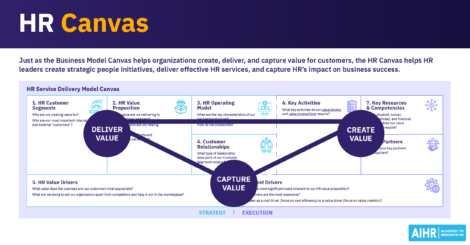AI Integration in HR: Educate, Equip, Expose and Elevate
AI is transforming the workplace, but is HR keeping up? While companies invest billions in AI and upskilling initiatives, many struggle to integrate AI into everyday HR processes. Without a clear strategy, AI skills alone aren’t enough. HR must move from learning to creating real impact.
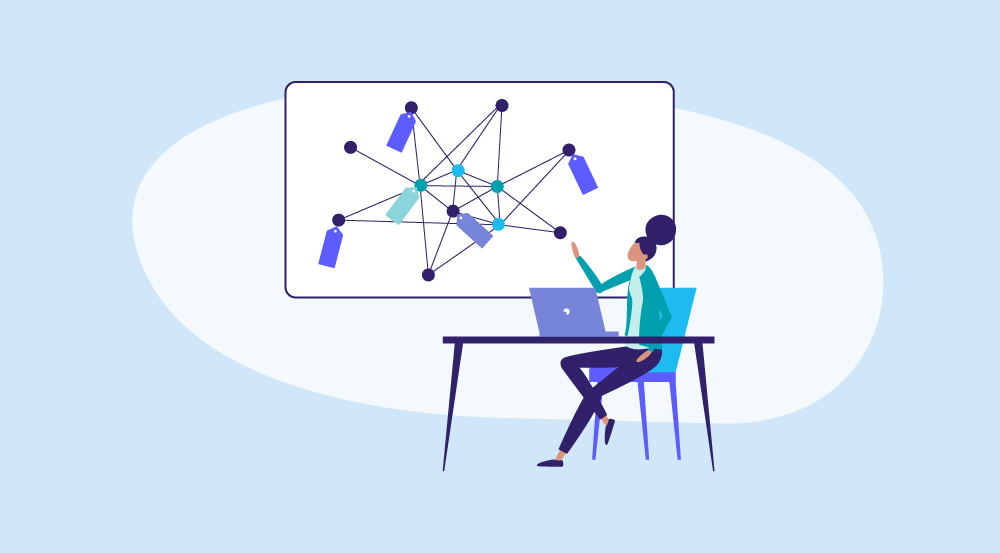
Global investment in artificial intelligence has jumped to $13.8 billion, increasing sixfold year over year. There has also been a notable increase in focus on building AI proficiency and skills, with organizations such as Ikea, JP Morgan, and Mastercard announcing large-scale AI upskilling initiatives.
Despite increased investments in AI upskilling, many HR professionals report that companies have not sufficiently adopted AI in a way that demonstrates impact and return on investment. This issue largely arises from organizations failing to integrate AI into their existing processes and workflows. 61% of HR professionals believe their departments have not yet successfully integrated AI into their work. Additionally, Gallup reports that only 22% of individuals feel comfortable or somewhat comfortable using AI in their roles.
That’s why upskilling alone will not lead to sustainable adoption. Instead, successful AI integration requires a combination of new skills and a clear strategy for applying AI in the HR function.
In this article, we dive deeper into how organizations can practically bridge the gap between upskilling and real-world AI integration.
Contents
What is AI integration in HR?
What are the skills HR professionals need in the age of AI?
4 strategies to drive AI integration in HR
What is AI integration in HR?
AI integration in HR refers to the use of artificial intelligence technologies to automate, enhance, and optimize HR processes such as recruitment, employee engagement, performance management, and workforce analytics. It’s not just about developing AI-related skills but also about strategically implementing, scaling, and leveraging AI to optimize processes, enhance decision-making, and drive business impact.
I think there’s this expectation that when new technology comes out like it’s here and now, it’s going to change the world. And I believe it will, but not within 24 hours. With every major technological transformation—whether digital or even something like the printing press, you essentially have two components. You have the tech thing being invented, and then you have humans using it. And which one do you think is more difficult?

What are the skills HR professionals need in the age of AI?
Our T-Shaped HR Competency Model defines five core competencies for HR professionals to succeed and remain relevant to meet the changing expectations of HR professionals:
While HR professionals have made strides in Business Acumen, technical HR expertise, and People Advocacy, their ability to leverage data and technology effectively remains a persistent challenge.
One reason for this gap is historical exposure—many HR professionals simply haven’t had the same immersion in data and digital tools as their peers in other functions like Finance, Marketing, or Operations.
Another potential reason is that HR professionals do not stay abreast of technological changes over time as they mature in their careers. Unfortunately, this lack of competence and confidence leads to limited translation of skills development back to the day-to-day work of HR professionals.
In an AI-driven world, Data Literacy and Digital Agility are even more critical than before. Beyond technical expertise, HR professionals also have to develop the right mindset and behaviors to set themselves up for success. This includes developing curiosity, systemic thinking, and the ability to critically evaluate and consider ethical considerations when using AI.
HR professionals are often hesitant to ask their employers for AI training. “I don’t want them to know I don’t understand this,” they say. But why would you? You work in HR—no one is born knowing AI. Yet, there’s a lot of shame around not instantly grasping digital transformation. In tech startups or big tech companies, there’s this unspoken expectation that you’ll absorb it when you walk in.

A common misconception, however, is that all HR professionals require the same skills to use and apply AI. Context is essential, and we have found it helpful to think about skills requirements in three distinct categories. These categories help us understand how AI skills are developed and how HR professionals apply different skills within different roles.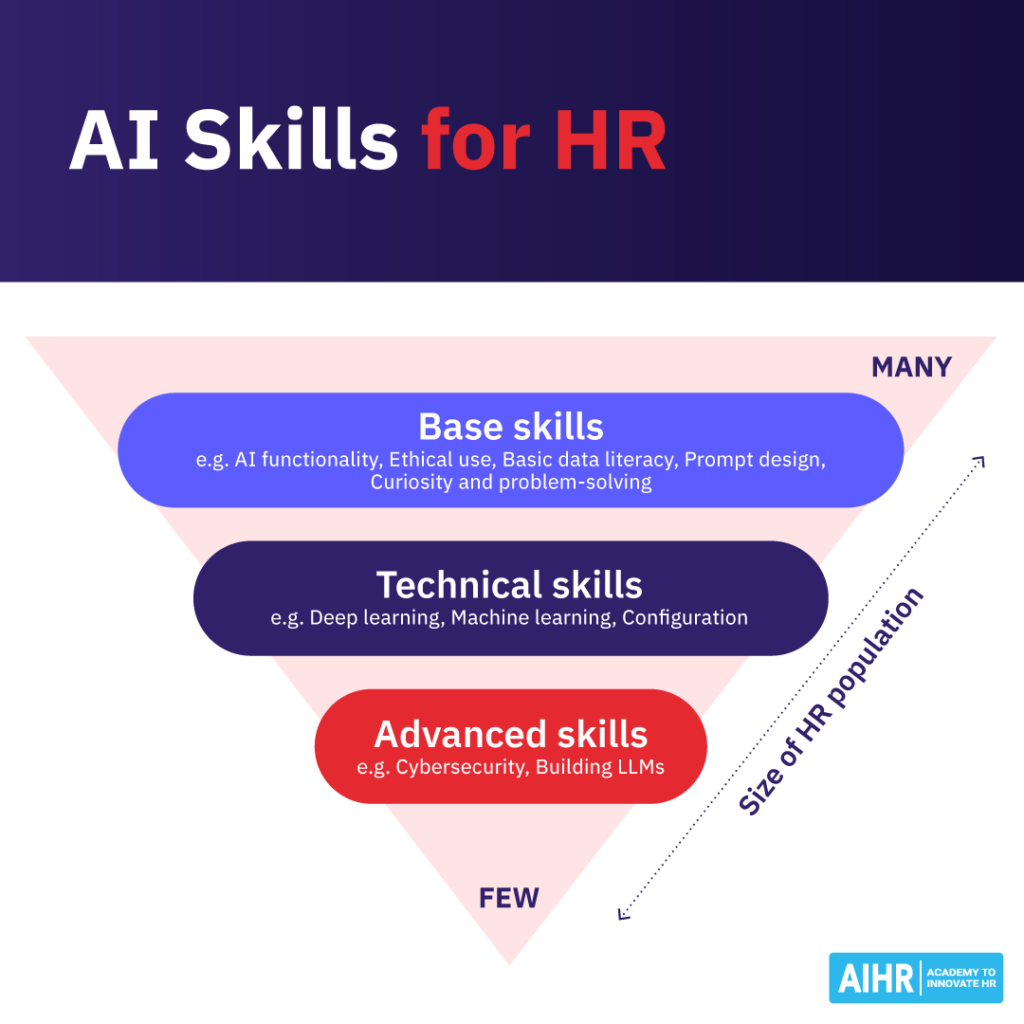
Let’s take a closer look at these three skills categories.
Base skills for general users
The first skills category applies to most HR professionals who interact with AI-driven tools but do not build or maintain them. They use AI within their role in areas like talent acquisition, employee engagement, and workforce planning.
To do this effectively, the key requirements for this group of HR professionals are to have a basic understanding of how they can leverage AI, confidence in where and how to apply AI safely, and the ability to use essential AI tools. Some of the key skills required are:
- AI fundamentals and functionality: Understanding the core principles of AI, including how machine learning, natural language processing, and automation work and their applications in business and HR.
- Ethical and responsible AI usage: Ensuring AI is used transparently, fairly, and responsibly by addressing bias, data privacy, compliance, and ethical decision-making in AI-driven processes.
- Basic data literacy: The ability to read, interpret, and apply data insights, including understanding data sources, quality, and limitations, to support informed decision-making.
- Prompt design (for effective AI interaction): Crafting clear, structured, and strategic prompts to enhance interactions with AI tools, improving accuracy, relevance, and response efficiency.
- Adaptability, curiosity, and problem-solving: Cultivating a mindset that embraces change, exploring new possibilities, and applying critical thinking to solve challenges in dynamic and AI-enhanced environments.
Stay ahead with AI-powered HR
The future of HR is AI-driven—are you ready to lead the change? Gain the skills to implement AI solutions that enhance HR efficiency, improve decision-making, and drive business success.
With AIHR’s self-paced Artificial Intelligence for HR Certificate Program, you’ll discover how to integrate AI into your HR strategy, harness cutting-edge technology, and shape the future of HR with continuous innovation.
Technical skills for builders and maintainers
The next category applies to fewer HR professionals. They are typically in roles that build, configure, manage, and optimize AI applications within HR functions. HR technology specialists, HRIS analysts, and some HR Center of Excellence functions fall into this category.
Applying AI at this level requires more specialized skills, including the following:
- Machine learning fundamentals: Understanding key machine learning concepts, including algorithms, training models, and pattern recognition, to grasp how AI learns and improves over time.
- Business analysis and AI integration: Evaluating business needs, identifying AI opportunities, and aligning AI solutions with strategic goals to drive efficiency and innovation.
- Data management: Organizing, storing, and securing data effectively to ensure accuracy, accessibility, and compliance for AI-driven decision-making.
- Programming and system optimization: Applying coding skills and technical knowledge to develop, refine, and optimize AI systems for performance, scalability, and reliability.
- Communication and stakeholder collaboration: Translating AI concepts for diverse audiences, fostering cross-functional teamwork, and ensuring AI initiatives align with business priorities and user needs.
Advanced skills for developers and innovators
The last category applies to a small percentage of professionals who specialize in AI research, development, and security. These roles drive AI advancements, develop proprietary models, and ensure ethical and legal compliance.
Even though these skills will not be represented in most HR roles, HR professionals who are involved in developing HR technologies must be proficient in these advanced skills:
- Advanced AI model development: Designing and refining complex AI systems, including deep learning architectures and large language models, to enhance automation, prediction, and decision-making capabilities.
- Cybersecurity in AI-driven HR applications: Safeguarding HR data and AI systems by implementing security measures to prevent breaches, bias perpetuation, and unauthorized access while ensuring compliance with data protection regulations.
- Analytical and critical thinking: Evaluating AI-generated insights with a data-driven mindset, questioning assumptions, and making informed, strategic decisions based on evidence and logical reasoning.
- Problem-solving for AI optimization: Identifying inefficiencies, troubleshooting AI system errors, and enhancing AI performance through continuous refinement and innovative solutions.
To build these skills successfully and sustainably, we need to adopt a different approach beyond simply upskilling all HR professionals.
We discussed how to successfully integrate AI in HR and the business with Sophia Matveeva, CEO & Founder of Tech For Non-Techies. Watch the interview below:
4 strategies to drive AI integration in HR
When it comes to AI, most HR professionals upskill themselves through self-exploration, online resources, or vendor-driven training on specific platforms and tools. While developing AI-related skills is important, this unstructured approach has many limitations and can even hinder successful AI integration in HR.
A broader, more strategic approach is needed—one that goes beyond skill-building to focus on the structured implementation, scaling, and effective use of AI in HR.
We propose a structured, step-by-step approach to driving AI integration through four key phases that move HR professionals from awareness to being able to scale AI within the team.
1. Educate: Building AI awareness and understanding
Before HR professionals can effectively use AI, they need a strong foundational understanding of what AI is, what it can do, and how it applies to HR. Moreover, they need to have a strong grasp of the risks associated with AI use, specifically data security, where it should not be applied, and the technology’s limitations, such as hallucinations. This starts with structured learning and exposure to real-world applications.
How to start
- Create structured training programs: Offer learning paths that introduce HR professionals to AI fundamentals, ethics, and practical applications.
- Show clear and relevant use cases: Use real examples to illustrate AI’s role in recruitment, employee experience, talent management, and workforce planning.
- Implement AI literacy frameworks: Provide a structured learning journey, ensuring HR professionals understand:
- What AI is good at (E.g., automation, pattern recognition, predictive analytics)
- Where AI can be applied in HR (E.g., talent acquisition, employee engagement, workforce analytics)
- How to approach AI in HR (Emphasizing ethics, data integrity, and responsible AI governance)
2. Equip: Providing the right tools and safe practice environments
Once HR professionals understand AI’s what and why, they need access to tools, guidelines, and structured opportunities to experiment. With the right tools, structured training, and a practice-first approach, they will gradually develop confidence and AI fluency. This phase focuses on practical application in a low-risk, supportive environment.
How to start
- Introduce AI tools progressively: Start with simple, user-friendly AI tools before moving to advanced applications. Generative AI tools can be a good starting point.
- Leverage familiar use cases: Begin with areas where HR professionals already have experience to build confidence.
- Create sandbox environments: Provide safe spaces where HR teams can experiment with AI without risk, allowing them to explore how AI generates insights, how AI adds value, and how to interpret AI-generated outputs. An example of this is using training HR data sets.
- Encourage reflection: Ensure users continuously reflect on what they are learning:
- Where has AI been useful?
- How does it enhance HR decision-making?
- How can AI applications be expanded over time?
3. Expose: Integrating AI into daily work and encouraging collaboration
Once HR professionals are familiar with AI tools, the next step is to embed AI into their daily workflows in a structured way. This involves gradual adoption, social learning, and an environment encouraging knowledge-sharing.
How to start
- Create structured experiments: Allow HR teams to test AI applications in a controlled way, measuring their effectiveness and iterating based on results.
- Facilitate social learning: Encourage HR professionals to share their AI experiences, challenges, and best practices. Strategies include:
- AI knowledge-sharing forums
- HR learning groups focused on AI integration
- Peer mentoring and collaborative problem-solving.
- Showcase success stories: Regularly share real-world examples of AI success within the organization. Highlight improvements in efficiency, candidate experience, or employee engagement.
By gradually integrating AI into real work scenarios, HR professionals will become more comfortable, confident, and willing to expand AI’s role in HR.
4. Elevate: Scaling AI across HR functions and strategy
The final step is to embed AI into the broader HR value chain, transforming HR from an AI adopter into an AI-enabled strategic function. This means moving from isolated use cases to a systematic and scalable AI-driven HR strategy.
How to start
- Expand AI applications across HR: Once AI proves its value in smaller projects, broaden its impact by embedding it into HR’s core processes and policies. Examples include:
- AI-driven talent management (E.g., predicting future skills gaps and reskilling needs)
- Intelligent automation of HR service delivery (E.g., AI-powered chatbots handling routine HR inquiries)
- AI-assisted employee development (E.g., personalized learning recommendations).
- Start with HR processes before enterprise-wide AI adoption: Focus first on HR-specific AI applications, then expand AI into enterprise-wide HR decision-making (e.g., AI-driven workforce planning at the executive level).
- Establish governance and ethical frameworks: Ensure AI is used responsibly by implementing bias mitigation, compliance, and AI transparency policies.
- Measure impact and iterate: Continuously assess AI’s effectiveness in HR processes. Regularly gather feedback, refine AI applications, and stay updated on AI advancements.
Getting started
The first step is understanding the current state of AI skills in your HR department and across the business. Assess where your team and organization stand by asking key questions:
- How is AI currently used in HR processes?
- What level of data literacy exists within the team?
- Where are the biggest challenges or inefficiencies that AI could help solve?
Understanding these factors will clarify where AI can add value, ensuring that adoption aligns with business and talent strategies rather than becoming a disconnected initiative.
Once you have established a baseline, prioritize your starting point for the various roles that form part of your HR team based on the three levels of skills requirements. Next, structure a roadmap to guide activities based on the four strategies of Educate, Equip, Expose, and Elevate.
AI adoption in HR is an ongoing journey, requiring continuous learning and iteration. Establish a system to monitor progress by tracking key HR metrics, gathering feedback from employees and HR stakeholders, and measuring the impact of AI-driven interventions. Regularly assess and refine your approach as AI capabilities evolve to ensure that AI strengthens HR’s role in driving business success rather than a one-time experiment.
Learn more
Related articles
Are you ready for the future of HR?
Learn modern and relevant HR skills, online







